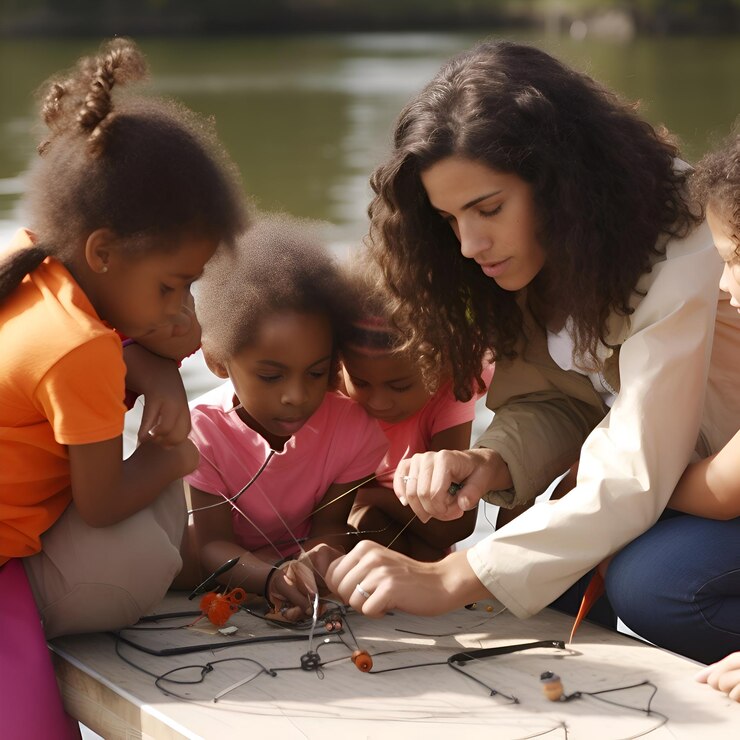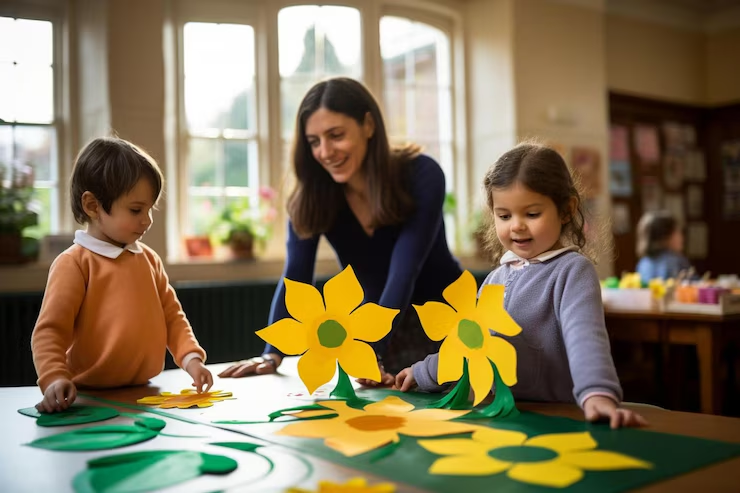Montessori Peace Education is a foundational issue of the Montessori teaching approach, specializing in cultivating respect, empathy, and expertise among college students. This technique encourages kids to view themselves as fundamental individuals of a global network, in which cooperation and non violent interactions are paramount. By integrating peace-targeted instructions and sports, Montessori education targets to broaden not best highbrow competencies but additionally emotional and social talents, preparing college students to navigate and make a contribution positively to the world around them.
“Averting war is the work of politicians; establishing peace is the work of education.” Dr. Maria Montessori
Defining Montessori Peace Education
Does Montessori Peace Education simply refer to the absence of war? Apparently, peace appears to be an obvious, common-sense concept. Everyone has some kind of personal interpretation of peace. The simple common-sense concept of peace refers to harmony, calmness, non violence and absence of war. However ,peace is quite a difficult concept to define.
- Does peace mean the absence of war?
- Does peace mean being calm at the moment?
- Does it refer to the state of agreement between two people, countries or cultures?
- Is it about making law and enforcing it ?
- Does it refer to people with conflicts still living in harmony together ?
Peace has many forms, layers and interpretations. For example, there may be two individuals who have conflicts amongst them and dislike each other to the level of hatred, but still may be outwardly maintaining a peaceful relationship. Likewise , someone may oppose and argue with somebody openly with strong words, but still feels justified and thoroughly at peace. Similarly, someone may have been damaging or defiling the environment while feeling completely at peace. Furthermore, there may also be a country dropping bombs on another with complete peace at home ground.
An ideal condition for Montessori peace education is that it is compatible with the social and culture framework and needs of the country. Moreover, it must also focus on the cultural and spiritual values along with the universal human values. Peace education has been in various ways. Some of the good definitions are given below;
- Montessori Peace Education is an attempt to respond to problems of conflict and violence on scales ranging from the global and national to the local and personal. It is about exploring ways of creating more just and sustainable futures. —R.D. Laing (1978)
- Peace education is holistic. It embraces the physical, emotional, intellectual, and social growth of children within a framework deeply rooted in traditional human values. It is based on philosophy that teaches love, compassion, trust, fairness, co-operation and reverence for the human family and all life on our beautiful planet. –Fran Schmidt and Alice Friedman (1988) Even though of the above definitions reflects a different opinion about peace education, but the core idea in all of them is the same, i.e.
- Peace education works as a corrective measure and refrains the child from getting involved in the violent activities in the society.
- It instills human and social values in the mind of the child.
- It equips the child with behavioral skills that help him to lead a peaceful happy life himself and human peace in the surroundings, resulting in the welfare of the whole society.
- It integrates peaceful attitudes in the teaching and learning process, and puts emphasis on making peace education a part of the whole curriculum. Peace education does not just involve naming a few efforts as peace education, rather real peace education means to integrate peaceful values, mind-set, skill, behaviors, attitudes and values into the entire learning process.
Interpreting Montessori Peace Education in Educational Context
For educational purposes it is necessary to describe peace ambiguously in a way that can be understood and adopted n=by the teachers and the students, and that can help them develop a positive peace approach. It needs to be presented as something that students need to learn in order to make this world a better place.
The word “peace” has a broad meaning. People tend to define peace according to their own preferred perspectives. Few of the interpretations are given below;
1.Economics
For an economist, peace means the economic well-being of all citizens and control of poverty.
2.Politics
In this context, peace is the outcome of good governance and democracy.
3.Anti-military
For an anti military related issue , there would be peace if there was no war.
4.Law
Peace is the maintenance of law and order.
Social Harmony
The social harmony group interprets peace as to resolve the issues among varied groups and join them all through justice.
Spiritual
In one perspective peace is an inner phenomenon rather than an external one. This group advocates looking for peace within oneself through meditation and other spiritual practices. The above interpretations are helpful in their own fields, as every interpretation contains a seed of peace, but each of them gives a restricted view of peace. Real peace cannot be carried out with such fragmentary perspectives. Holistic peace is such a fragmentary holistic interpretation which harmoniously blends external, internal, individual and social factors.
Generally people take peace as the absence of war, however it is much more than that. Peace does not only refer to the absence of war , but it also stands for absence of all forms of violence such as social injustice, poverty, discrimination, threats and exploitation, etc. A society will be peaceful in the real sense if none of the above mentioned negative elements exist in it . For instance, if a section of society is exploited by creating artificial scarcity if resource inflation, the suffering artificial will definitely not be at peace. Such a situation when there is no war but still some factors hinder good life can be termed as negative peace.
As Montessori Peace Education aims to practically engage children in maintaining and restoring peaceful conditions of living, it is useful for educators to define peace in behavioral and action-oriented terms rather than in abstractions. A good example of such a definition is given below.
Peace is the behavior that encourages harmony in the way people talk, listen, and interact with each other and discourages actions to hurt, harm, or destroy each other.— Theresa M. Bey and Gwendolyn I: Turner (1995) . Thus, peace can be interpreted in many ways elements such as;
- Happiness
- Health
- Contentment
- Serenity
- Economic well-being
- Justice
- Purposeful work
- Freedom of expression
- Availability of opportunities for self growth and creativity
Holistic approach to Montessori Peace Education would involve each and every aspect of human existence that may affect the beauty of existence.
Conclusion:
Montessori Peace Education is quintessential to the Montessori teaching method, specializing in nurturing admire, empathy, and critical wondering abilties in students. This philosophy perspectives children as vital members of a global network, emphasizing the significance of lively engagement in fostering peace in place of simply keeping off warfare. Through a holistic approach that encompasses emotional, social, and intellectual development, Montessori Peace Education prepares college students to be peacemakers, integrating the values of justice, concord, and know-how into each day activities and interactions, thereby aiming to form a more non violent global.
